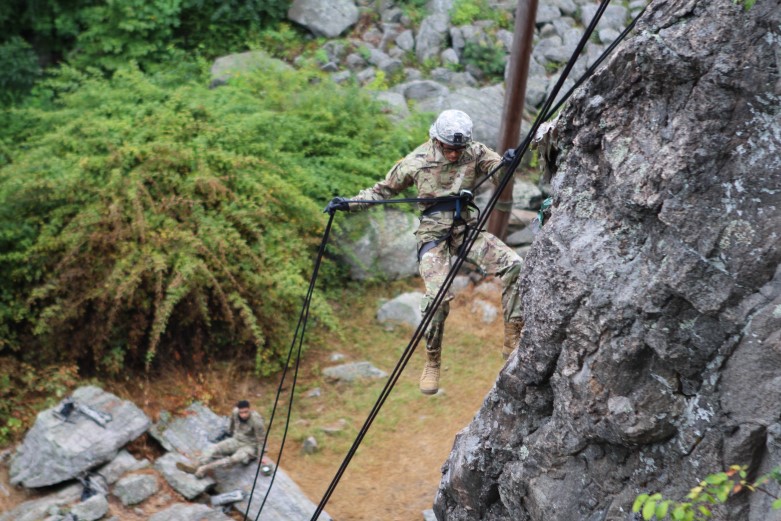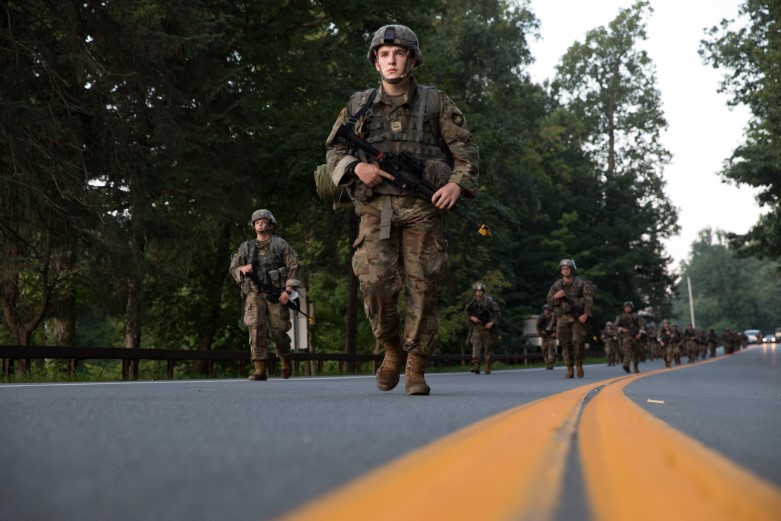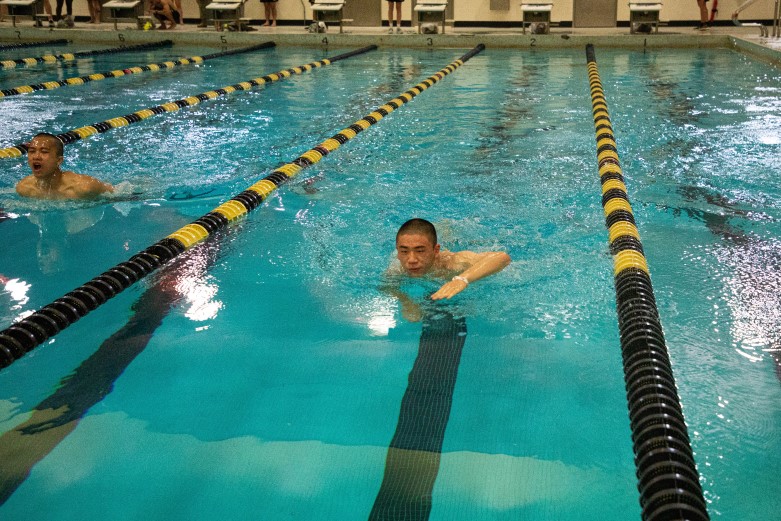CBT is a demanding progression of sequenced training requirements that form the foundation for all future instruction at the U.S. Military Academy (USMA). New Cadets are challenged daily as they learn fundamental military skills.
CBT is a demanding progression of sequenced training requirements that form the foundation for all future instruction at the U.S. Military Academy (USMA). New Cadets are challenged daily as they learn fundamental military skills.
A new cadet’s fitness level and individual preparation for the specific physical rigors of CBT will directly influence their success and minimize the chance of injury. They can expect long days that are mentally and physically taxing. This site highlights some distinct physical requirements of CBT and how to prepare for them.
Military life includes daily physical readiness training (PRT). CBT introduces cadets to PRT with the intent of imposing stress, exposing them to Army PRT, and enforcing proper movements standards. This training builds foundational skills necessary to develop fitness and meet the physical rigors of USMA.

The general recommendations outlined below for the Army Fitness Test (AFT) will also provide an adequate preparation for daily PRT. To maximize preparedness and minimize injury, new cadets should emphasize improving their flexibility and strength-to-bodyweight capacity. This will improve range of motion and the ability to move effectively during military activities that occur over the course of the summer.
Flexibility
Flexibility training should occur five to seven times a week using a both static and dynamic stretching.
Strength-to-Bodyweight
To improve strength-to-bodyweight capacity, cadets should incorporate bodyweight exercises into their fitness program. Bodyweight exercises are strength training activities that use an individual's own weight to provide resistance against gravity.
For example, pull-ups are a common exercise that improves an individual’s ability to pull their own weight.
The Army Fitness Test (AFT) is a comprehensive physical fitness assessment designed to evaluate cadets' readiness for military service. It includes age- and gender-normed scoring for support Military Occupational Specialties (MOS) and branches and gender-neutral, age-normed scoring for combat MOS and branches such as Infantry, Armor, Engineers, and Artillery. All cadets are encouraged to prepare for and meet the standards required for combat specialties. The test consists of five events, providing a thorough evaluation of physical preparedness for the demands of military service. During the six weeks of Cadet Basic Training (CBT), cadets will perform the Army Fitness Test (AFT) once. This final AFT will be conducted at the end of CBT.
The below links provide a detailed description of each event.

Preparation for the AFT can be accomplished by adhering to a comprehensive training plan that includes:
Maximize the benefits of training:
A routine part of military operations is moving from one location to another while carrying a load. As such, new cadets are introduced to weighted foot marches (“ruck marches”) during CBT. Cadets will conduct foot marches three to five times over the summer across varying distances, culminating with a 12-mile foot march from Lake Frederick to West Point while carrying 45 pounds of equipment.

Foot marching requires mental toughness, toughened feet and lower body muscular endurance capable of moving yourself and your equipment across miles of hilly terrain. These can be developed by starting with a weight and distance that is reasonable to your ability.
To start:

It is important to select a proper pair of boots to avoid blisters and maximize performance. Boots must be advertised as "AR 670-1 Compliant" to be worn while in military uniform.
Several pairs of combat boots will be issued to you upon arrival, but it is helpful to arrive with worn-in military boots.
During the first week of CBT, new cadets will swim 150 yards for time. Performance during the swim test will determine which level of survival swimming class (e.g., novice, intermediate, high, advanced) an individual will take at the Academy.

Preparation recommendations are based on swimming ability.
If you are unable to complete the swim test, you will be placed in a novice swim class during your first year at the Academy that will focus on the fundamentals of swimming.
Your training for CBT should start as early as possible. Early and adequate physical preparation will provide you with the confidence and physical abilities necessary to successfully graduate CBT and reduce your risk of injury.
You will generally run five to six days a week during CBT. Running will consist of 1-2 miles of formation runs to PRT areas, distance runs in ability groups, and sprint training exercises.
You will have PRT sessions that will consist of a 90-minute workout. Your PRT sessions will have various focuses including sprints, long-distance runs, ruck marches, and muscular strength and endurance exercises.
For temporary medical conditions, you can use alternate events to train. But you won’t take the scored AFT until you’re medically cleared.
If you don’t pass a recorded-score AFT, the Army will provide you with support and training to improve your score, and you’ll have a chance to retake the AFT. If you don’t pass two consecutive recorded-score ACFTs, you may be involuntarily separated from the Army.
Yes, physical fitness is a critical requirement and expectation for those who serve in the military. As a leader in training, you will take the AFT twice a year. Upon commissioning as an Army officer, you will continue to take the AFT twice a year for the duration of your service.